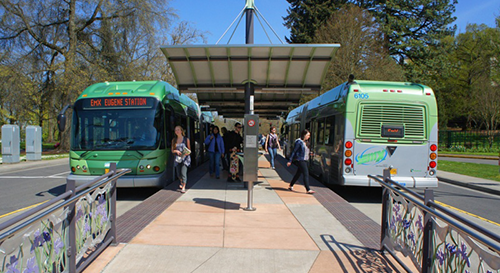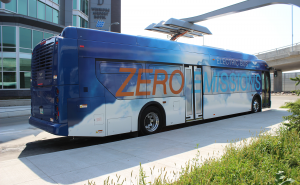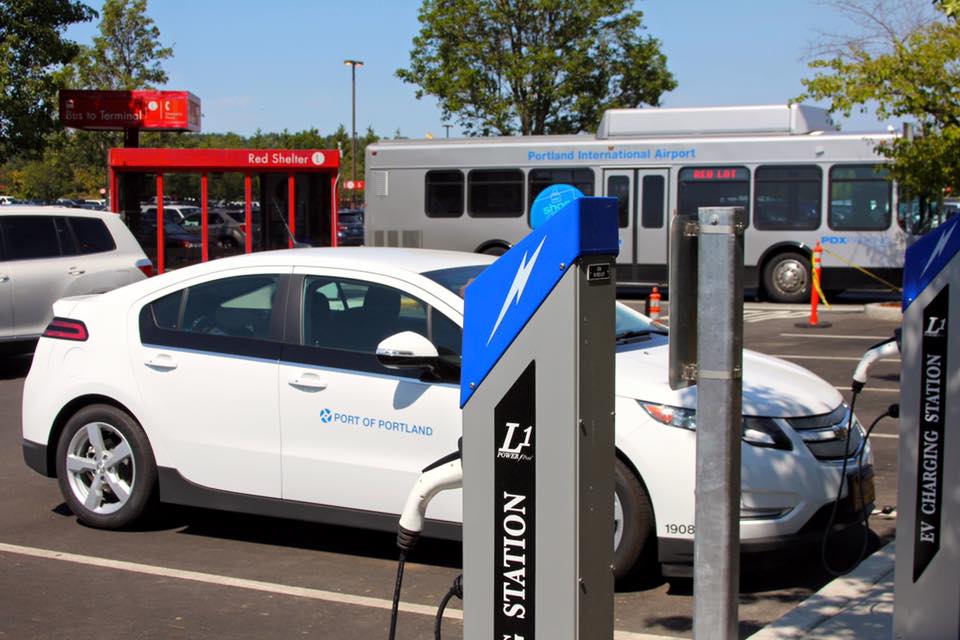Build Your Fleet
Adding all-electric vehicles to your fleet can save you money and time while demonstrating your organization's values.




Walk the Talk
Oregon businesses, nonprofits, and public entities are leaders in sustainable practices. By investing in electric vehicles and/or charging infrastructure, you’re demonstrating your commitment to clean air and reduced greenhouse gas emissions.
Get Started
If you're ready to make the switch to an EV or other alternative fuel fleet, there are great resources out there that can help:
Oregon Department of Energy can help you plan your fleet, recommend the best vehicles for your needs, and determine charging infrastructure needs.
Oregon Department of Transportation offers a great starting place for transit agencies interested in fleet electrification. Includes good information and advice for public entities and businesses, too!
Columbia Willamette Clean Cities Coalition is a nonprofit offering training and advice on alternative fuels for businesses and organizations in the Pacific Northwest.
Forth, the organization formerly known as Drive Oregon, can also offer guidance for workplace EVs and charging infrastructure.
Communities Taking Charge Funding
The Joint Office of Energy and Transportation, through the Department of Energy, has made available $54 million in new federal funding for projects that will expand community e-mobility access and provide clean reliable energy.
The funding will drive innovation in equitable clean transportation and support efforts around innovative charging solutions for electrified ultra-light, micro, light, and medium-duty fleets that transport people through shared rides, shared vehicles, or transit operations, and through the last mile goods delivery in communities.
Submission Deadline: May 20, 2024, 5 p.m. ET
Learn more: Expanding E-Mobility Solutions through Electrified Micro, Light and Medium-Duty Fleets
Call the Experts
Columbia Willamette Clean Cities Coalition offers training and expert advice to fleet managers statewide. Listen to learn more:
Lower Maintenance Costs
Traditional internal combustion engines have dozens of moving parts, with maintenance costs that add up over time. EVs don't have internal combustion engines, which means you can forget about paying for oil changes, timing belts, transmission fluid, and spark plugs. In an EV, your most frequent maintenance expense will be windshield wipers and tires.
Electric vehicles use regenerative braking, which means your battery is recharged when you apply pressure on your brakes. Lifting your foot off the gas pedal also helps slow the car naturally, so you may not have to apply the brakes as often – leading to brakes that typically last longer than gas-powered cars.
Advances in battery technology from the first EVs have been significant. The U.S. Department of Energy reports that batteries in new EVs are designed to last for the expected lifetime of the vehicle. Manufacturers offer up to 100,000-mile battery warranties – and if you need a replacement, your car dealer will help recycle your old battery.
Variety to fit your needs
With more models on the market than ever before, there's a plug-in electric vehicle that can work for your business or organization.
Check out the U.S. Department of Energy's drive finder to "plug in" your needs and identify models that could work for you!
Transit and School Bus Electrification
A collaboration between ODOT, ODOE, and DEQ created cost comparison tools and guidebooks to assist Oregon organizations electrify their transit and school bus fleets.

